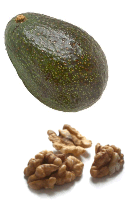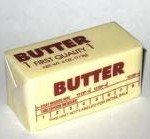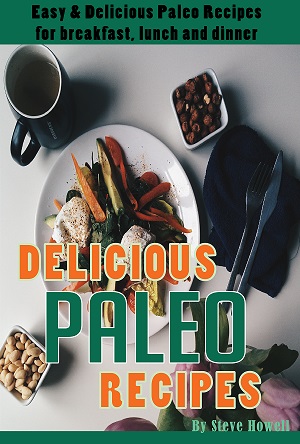Types of Fats
What are fats? There are several types of fats, chemically, fats are triglycerides (triesters of glycerol and fatty acids). They are usually insoluble in water but soluble in organic solvents. Ok, enough chemistry.
Typically fat that is liquid at room temperature is called oil. Fat that is solid at room temperature is referred to as fat. For our discussion of types of fats, it can be either a liquid or a solid.
Fat is a nutrient that is necessary for healthy body functions. Too much fat in the diet, regardless or the type of fat, is not a good thing. A no fat diet is not good for you either. We are just eating the wrong types of fats and generally too much. We do need some fats. Especially the essential fatty acids.
Fats are Essential
Essential fatty acids are polyunsaturated fats that the body can’t readily make on its own, and is necessary for good health and disease prevention and treatment. The two primary essential fatty acids are linoleic acid, an omega-6 fat and alpha-lineolenic acid an omega-3 fat.
Optimal health requires a balance of these types of fats. Today most people’s diet is high in omega-6 and low in omega-3. Omega-6 fats are found in meat, poultry, dairy, eggs and polyunsaturated oils like corn oil and safflower oil.
You can get omega-3’s from flaxseed, walnuts, leafy greens, soy products and fatty fish. The higher the ratio of omega-6 to omega-3, the higher the risk of heart disease and diabetes. You should consume 1 to 2 grams of omega-3 daily.
An
omega-3 supplement is usually required if you are not eating the proper
foods, especially if you don’t eat fatty fish regularly. I don’t
recommend eating a lot of fish though. It is one of the most polluted
foods we eat. Fish can be contaminated with mercury, lead, chlorine,
bromine, dioxins and PCBs. Yummy!
Fish such as the salmon from the Great Lakes are so polluted that you get as much PCBs from a half pound of it as you would if you drank the lake water for 100 years.
The Good Fats

Unsaturated Fats – This is the group of fats that are a mixture of monounsaturated and polyunsaturated fats. This is what is considered by the experts to be the “good” fats. Eating these fats may lower cholesterol when substituted for saturated or trans fats, but they still cause weight gain and may promote disease.
Monounsaturated Fats – An unsaturated fat found in avocados, most nuts, seeds and peanuts. Olive oil, canola oil and peanut oil contain a higher percentage of monounsaturated fat as compared to other oils. Regardless of what the so called experts say, these oils are not health foods. They are still 100% fat.
Polyunsaturated Fats – An unsaturated fat found in some fish, corn oil, soybean oil, safflower oil and sunflower oil. These are the omega-3 and omega-6 fatty acids.
The Bad Fats
Cholesterol – This is a waxy fat that is produced by the body and found in animal products like meats, poultry, dairy and eggs. Eating foods containing cholesterol can raise blood cholesterol, although not as much as eating saturated and trans fat foods. Plants are virtually cholesterol free.
The Ugly Fats

Hydrogenated Fat – Also called Trans Fats – These fats are not naturally occurring. These are unsaturated or polyunsaturated fats that have hydrogen molecules added to them. This turns them from an oil, or liquid, to a solid at room temperature, such as margarine.
This process extends shelf life. This allows restaurants to be able to fry foods over and over and manufacturers to be able to add it to processed food like cookies and crackers extending their shelf life.
Although it doesn’t become a saturated fat, it does produce trans fatty acids. Trans fatty acids raise LDL the bad cholesterol and lower HDL the good cholesterol. Evidence is accumulating that implicate these fats as causing cancer and heart disease. These should be avoided. Again, none in plants.
Saturated Fats – These types of fats are solid at room temperature. They also raise bad cholesterol. They are found in meats, poultry, dairy and eggs. Other sources are coconut and palm oil. Foods really high in saturated fats are butter, cheese, fatty meats like prime rib, and chicken, especially with skin. Again, very little in plants.
In Conclusion
High fat diets have been proven to be the cause of increase rates of heart disease, cancers, diabetes and other health issues. Even the so called healthy fats and oils such as olive oil can pose risks. It is the excess calories that pose the health risk.
If a tablespoon is 120 calories and you follow the recommendations of the “experts” and consume 1 to 2 tablespoons a day. That is an extra 120 to 240 calories a day. One pound of body fat is about 3500 calories, so that is 1 to 2 pounds a month.
If you are at your ideal weight eating unsaturated fats and oils is probably not a big deal. If you are overweight that could be a big deal.
It’s the trans and saturated fats that are the real killers. Cheese is the biggest killer today. It has more saturated fat than almost any other food. 8 to 9 grams of fat per ounce. An ounce of cheese is not much cheese. Even low fat cheeses are around 50% fat with 60% or more of that being saturated fat.
Remember, we must have fats in the diet. So when you ask, what types of fats should I eat, remember, these should be the healthy fats found in raw seeds, nuts, avocados, and maybe some fish. Include omega-3 fats and avoid saturated and trans fats.
Leave Types of Fats and return Home
Article by: Steve Howell


